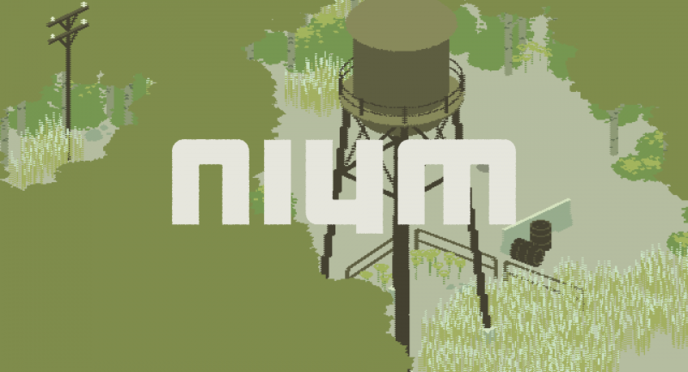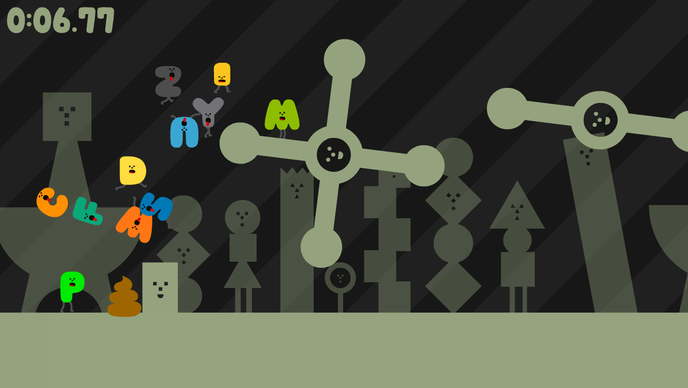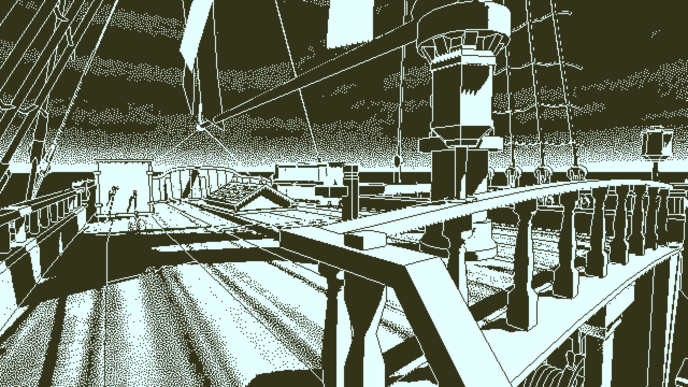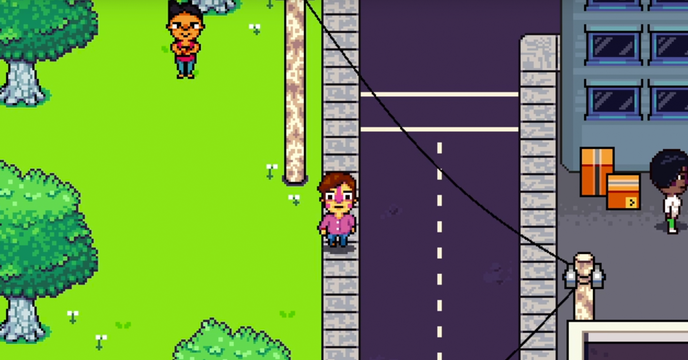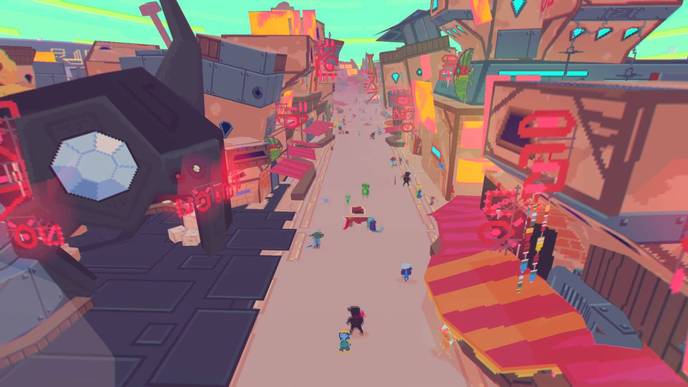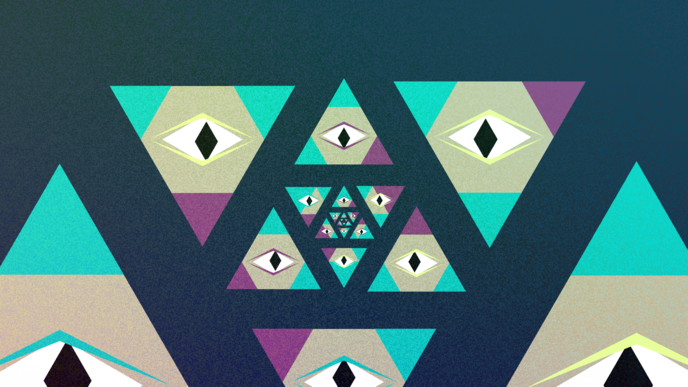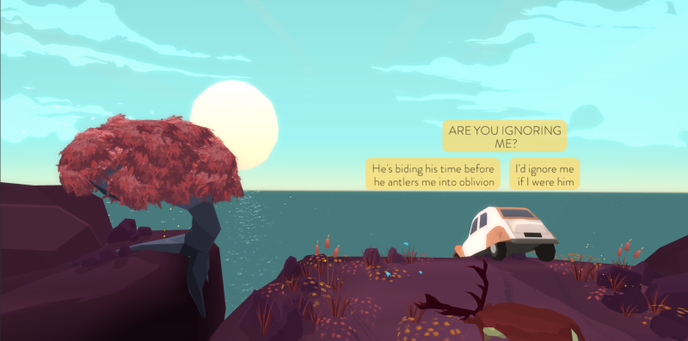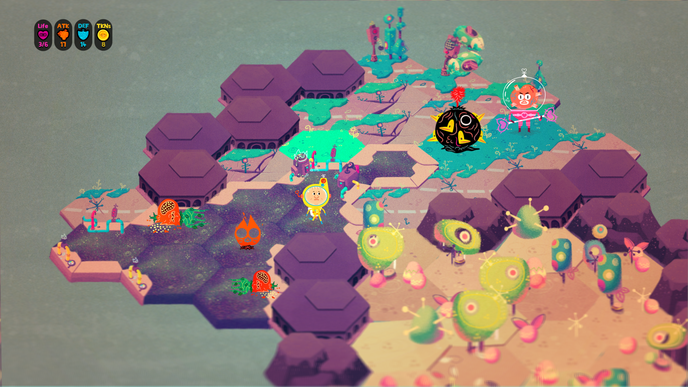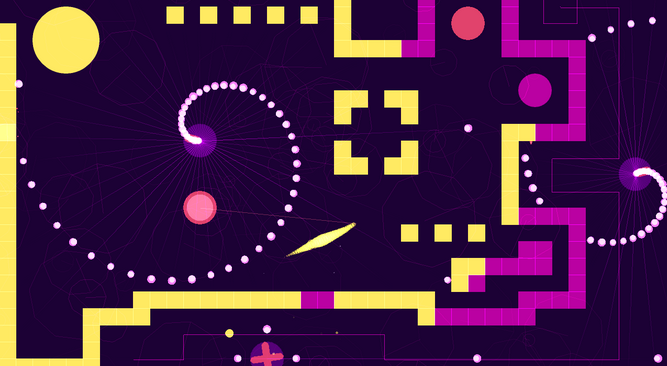
The seventh annual Fantastic Arcade has come and gone in Austin, Texas. A showcase put on by Austin game collective Juegos Rancheros, highlighting original game development both abroad and local, the air around the Arcade is decidedly DIY. Tech demos and arcade cabinets, stacked alongside strange LED screens and inputs, put forth some of the most interesting games you could find.
For the most part, the games I played were incomplete, portions of something that strive to be more substantial or just quick, experimental ideas tossed together. And if you weren’t able to make it, you can get the Fantastic Arcade experience at home this year, with Juegos Rancheros’ bundle of five originals on Itch.io.
Here’s a list of some of the coolest, weirdest and most fascinating games that were at this year’s Arcade.
1. Nium
The creator of Downwell made this atmospheric, mysterious game. As a lone wanderer in some sort of post-apocalyptic wasteland, you have to progress through a beautiful isometric map, defending against mutated creatures with your trusty crowbar. Surprisingly, the arcade cabinet setup clicked for Nium. Able to either swing your crowbar or throw it to hit flying enemies, you could develop a rhythm with the buttons that felt physical. The music and art style is also brilliant, and I can still hear its ominous, bright noises beeping away while I type this. It’s a massive departure from the arcade-meets-roguelike nature of Downwell, but it still has all of Ojiro Fumoto’s style and presentation in full force.
![]()
2. Inspector Woof & The Vegetable Highschool
It’s strange to think of an investigative exploration game as being arcade-like, but the Klondike collective’s detective game condenses the Phoenix Wright experience to a short, effective fifteen minutes. Most of your interaction is talking with suspects and learning facts, leading up to finding the decisive bit of evidence that will force their hand and make them tell you concrete details. It’s set inside a quirky Vegetable Highschool, where all the students are sentient veggies, and Inspector Woof doesn’t dance around some bad puns associated with the absurdity of its setup. Inspector Woof is clever and focused, and by the end of the case I played, I was hoping there was more crime to sniff out.
![]()
3. Alphabet
My thoughts on Alphabet ranged somewhere between charmed and frustrated, and I suppose “endearing” might be the best compromise there. A game designed by Katamari Damacy’s Keita Takahashi, you literally control an alphabet of letters careening across a goofy obstacle course. Each letter jumps and runs according to when you press the corresponding key on the keyboard, and it turns into a frantic typing mess so inaccurate and hurried that Mavis Beacon might faint playing it. I did get annoyed in harder levels, where some of my lesser-typed letters constantly lagged behind, but there are some clever mechanics added that give you brief moments of controlling the entire group, rather than the rabble of letters, enough so that I didn’t hit “I quit” levels of frustration. Alphabet has a great deal of style and charm, and is unique enough that it’s hard to dissuade anyone from trying it at least once.
![]()
4. Return of the Obra Dinn
Lucas Pope, designer of Papers, Please, put together this solemn, stylish exploration game about piecing together the disappearance of an entire merchant ship’s crew. Its aesthetic is incredible in screenshots and even more so in motion, creating an aged feeling of peeling apart layers of the past. As you delve deeper in the bowels of the ship, you begin to piece together the puzzle of what happened to the crew, and have to cope with the surreal and supernatural. The unique mechanic it introduces to see those things firsthand is surprising, though not always exciting, but the game’s style made Obra Dinn stand out from the crowd in a major way. It will be interesting to see what the finished experience is like, apart from the short teases and demos.
![]()
5. Knuckle Sandwich
The last few years have seen a great deal of spiritual successors to Earthbound’s quirky legacy. Knuckle Sandwich falls into the same category, using absurd situations and quirky, fourth-wall breaking writing to mess with the player and inject comedy into its otherwise normal setting. You may be in a small town at a job hunting agency, but then your appointment turns into a game show, where you have to play Dance Dance Revolution to audition for a new profession. It’s clear from the outset that Knuckle Sandwich is drawing inspiration its predecessors, but it does so well enough to stand on its own, and also mixes in plenty of original ideas. If more Earthbound homages played like this, we would all be a little better off.
![]()
6. Diaries of a Spaceport Janitor
There’s joy to be found in tedium, and Diaries takes this concept to its best lengths. You play a Janitor who dreams of leaving behind your planet, of going to new places and seeing interesting sights, while meticulously picking up garbage in an alien marketplace. The pseudo-2D look is incredibly unique, but the way developer Sundae Month manages to make picking up garbage feel purposeful and important is incredible. The analogues between game-y progression and advancing towards your goals are well-done, and you start to really care about your janitor’s quest to leave and move on. This was one game I quit out of early, not because it didn’t grab me, but because I wanted to experience it wholesale.
![]()
7. Yankai’s Triangle
Continuing to prove that 2016 is the Year of the Puzzle Game, Kenny Sun’s game of infinite triangles is a great use of color-matching. It starts out simple: match the colors of each triangle’s side, connect them together, go to the next layer. Sun plays with this concept a great deal though, moving through many interesting permutations of matching triangles, offering puzzles with multiple matches but only one solution, and adding difficulty in how changes in the lower layer ripple up to the top. I wish it had been (or will become) a mobile game, because the tactile feel of tapping the triangles would play out a lot better on a phone or tablet. As is, I’m hoping I can use this to burn time on a commute someday, as it’s a deceptively simple but fascinating puzzle game.
![]()
8. Far From Noise
It’s really difficult for a story-driven game to give a good first impression. Usually when on the show floor of a games convention you get (at best) a sense of the five W’s, with the Why usually being fuzzy and incoherent. Far From Noise subverts most of that by being a short, contained experience, and by capitalizing on the absurdity of it. You are in a car, teetering on the edge of a cliff. The only interaction is a dialogue you have with yourself, attempting to calm down and figure out a plan. Or you can freak out, cry, break-down, blame God, whatever—it’s your car, and your cliff. Discussing anymore would ruin what might be one of my favorite demo twists ever, but George Batchelor’s gorgeous, strange game stuck with me on the drive back home.
![]()
9. Loot Rascals
I have a confession: I like roguelikes. Something about the constant progression forward, without the fear of losing anything too critical, plays well for me. Loot Rascals nails that sense of progression-despite-regression that keeps you involved in its formula, despite bashing your head against a brick wall over and over. The card system and hexagon-board pseudo-strategy lend just the right mix of calculating your next move and gambling on the one after. It doesn’t hurt that Loot Rascals’ aesthetic was created by the team behind Hohokum; it’s animated and presented wonderfully, in a way that masks the hard-numbers system ticking underneath the surface. Loot Rascals is certainly a roguelike, and it doesn’t always do a lot that goes above and beyond that label, but it executes with enough look and feel to stand out from the crowd.
![]()
10. Soft Body
After a massive binge session of games, the last one I booted up was Zeke Virant’s Soft Body. Hidden near the end of the showcase list, Soft Body mixes bullet-hell action with a slow, painterly approach. It is the most relaxed I have ever felt dodging tides of tiny bullets, and the quiet music and beautiful aesthetic of Soft Body was like a retreat from the bright lights and active arcade games. Despite how fast I was moving and how many obstacles I dodged, it felt meditative, and that’s the weird dichotomy of Soft Body: It mixes active concepts with a soft, calming appearance. I didn’t care if I failed a level or kept messing up the same section, because it was just another drop in the puddle. This is the antithesis of someone yelling on their mic during an online match of Insert Any Modern Shooter Here, and at the end of a long day of playing games, I appreciated that a great deal.
Eric Van Allen is a Texas-based writer. You can follow his e-sports and games rumblings @seamoosi on Twitter.
